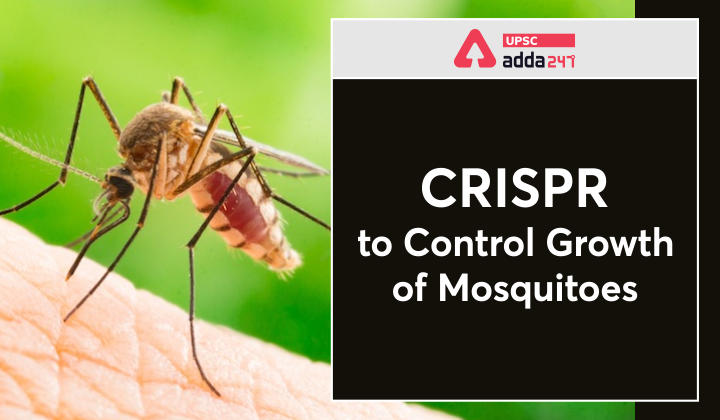Table of Contents
Relevance
GS 3: Science and Technology- developments and their applications and effects in everyday life.
Context
Recently, researchers have created a system that restrains populations of mosquitoes by using CRISPR-based genetic engineering.
Key points
Sterile Insect Technique
- The sterile insect technique is an environmentally-friendly insect pest control method involving the mass-rearing and sterilization.
- SIT uses radiation of a target pest, which is followed by the systematic area-wide release of the sterile males over defined areas, where they mate with wild females.
- It results in no offspring and a declining pest population, which helps in decreasing the instances of diseases such as dengue and malaria.
What is pgSIT?
- The “precision-guided sterile insect technique” (pgSIT) is a SIT that alters genes linked to male fertility—creating sterile offspring—and female flight in Aedes aegypti, the mosquito species responsible for spreading diseases including dengue fever, chikungunya and Zika.
- The pgSIT uses CRISPR to sterilise male mosquitoes and render female mosquitoes (which spread disease) flightless.
Two enabling features of pgSIT
- It is self-limiting that means it tends to go away on its own, without any external treatment.
- It is not predicted to persist or spread in the environment.
pgSIT to contain mosquito
- pgSIT eggs can be shipped to a location threatened by mosquito-borne disease or developed at an on-site facility that could produce the eggs for nearby deployment.
- Once the pgSIT eggs are released in the wild, sterile pgSIT males will emerge and eventually mate with females, driving down the wild population as needed.
About CRISPR
- Clusters of Regularly Interspaced Short Palindromic Repeats (CRISPR) is a family of DNA sequences found in the genomes of prokaryotic organisms such as bacteria and archaea.
- CRISPR technology is a simple yet powerful tool for editing genomes. It allows researchers to easily alter DNA sequences and modify gene function.
- Its many potential applications include correcting genetic defects, treating and preventing the spread of diseases and improving crops.
- CRISPR is s shorthand for “CRISPR-Cas9.” Where Cas9 is an enzyme that acts like a pair of molecular scissors, capable of cutting strands of DNA.
- CRISPR-Cas9 is a unique technology that enables geneticists and medical researchers to edit parts of the genome by removing, adding or altering sections of the DNA sequence.



 UPSC Prelims Exam Date 2024, Check New E...
UPSC Prelims Exam Date 2024, Check New E...
 UPSC Eligibility Criteria 2024- Age Limi...
UPSC Eligibility Criteria 2024- Age Limi...
 UKPSC RO ARO Result 2024 Out, Download M...
UKPSC RO ARO Result 2024 Out, Download M...







